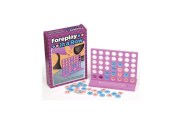Breastfeeding made me feel so close to both of my beautiful babies. I mean, I was keeping them alive with this magical liquid that only my body could make! Very cool. It was a bonding experience, an empowering experience, and to be honest, I miss it. However, I know plenty of moms who didn’t enjoy breastfeeding. It just wasn’t their thing. And you know what? That’s okay. But before you make a decision about whether or not you’ll breastfeed, it is useful to get informed about it. To help you out, we’ve compiled breastfeeding tips and advice, including how to get a good latch, the best breast pumps on the market, and resources for breastfeeding help.
Breastfeeding tips for new moms:
- Always ensure your baby has a good latch
- Watch for cues that your baby is eating well
- Stay hydrated and eat regularly to support good breast milk production
- Reach out to a lactation consultant if you need help
Read on for more info on each of these breastfeeding tips!
What does breastfeeding feel like?
As you might expect, breastfeeding feels like a strong tugging sensation. Having a correct latch makes a big difference, too. If your baby has latched on correctly and has your nipple deep in her mouth, it (probably) will not be painful. Breastfeeding can become painful when your baby isn’t getting a good latch.
How can I help ensure that my baby gets a good latch?
According to Kathy Lilleskov, a certified lactation consultant in Brooklyn, New York, there are a lot of possible positions for getting a good latch. One method that’s successful for many moms is supporting the baby’s body and neck, positioning her so her tummy is pressed against yours. If you are lying belly-to-belly, try supporting the breast with the outside hand (for instance, if baby is nursing on the left breast, support the breast with the left hand, baby with the right). Tilt the baby’s head so that the chin will touch first (at the areola) and then the lip will brush against the nipple. Tickle her upper lip/nose with your nipple to pique interest so that she opens her mouth wide. Then, swiftly guide your baby onto the breast (never drag breast to baby), so the upper lip is on the top side of the nipple and tongue and lower lip are on the bottom.
To make sure your baby’s nose is not pressed too tightly against your breast which would inhibit breathing, Lilleskov suggests applying gentle pressure between the baby’s shoulders (with the baby-supporting hand), in order for baby’s head to fall back away. All breasts are different, but try to get the entire nipple and as much of the areola as you can inside your baby’s mouth.
How can I tell that my baby is properly latched?
A good latch should feel like your baby is tugging, not biting, while eating. You should also be able to see her swallowing breast milk into the gullet, where you can see the tissue drop down between the chin and collarbone area.
Is there a wrong way to unlatch a breastfeeding baby?
Not all babies let go when the feed is over, but never pull your baby straight off the breast during a feed. It can be painful! Try gently hooking your finger inside your baby’s mouth, between the gums and cheek, to create an air pocket which will break the suction. Lilleskov reminds moms to leave the finger in place as they release the baby, so that baby doesn’t try to pop back onto the breast.
How should I hold my baby while breastfeeding?
Learning the different ways to hold your baby while breastfeeding is essential, because part of getting a good latch and enjoying nursing is being comfortable. Here are some of the most common ways to hold your baby while breastfeeding. Try them all out and choose the one that’s most comfortable for you!
1. Football hold
Lay your baby down the length of your arm with her head in your hand (like a football player holds a football). This one is especially useful for C-Section moms with a sore abdomen.
2. Cradle hold
Lay your baby along your forearm across your waist with her head in the crook of your arm (the side you’re nursing on), with her bottom supported by your other arm. Ear, shoulder, and hip should stay in a straight line, with her lower arm tucked under yours.
3. Cross-cradle hold
Much like the cradle hold, but you support the baby’s head with your opposite arm and hand, rather than the crook of the arm on the side she’s nursing.
4. Side-lying hold
Lie on your side in a comfortable place with a pillow under your head. Bring your baby into the crook of your arm, almost into your armpit. Use your free arm to establish a latch.
How do I know that my baby is getting enough milk?
Although it is likely that your baby is getting enough milk, this can cause concern, nonetheless! Signs to look for that your baby is well fed:
- You see her swallowing during a feed
- She produces about six dirty diapers a day once your breast milk comes in (including three bowel moments)
- She is gaining weight normally, as in four to seven ounces per week (but keep in mind that babies usually lose weight within the first week of life and then they start to gain after that).
An absence of these signs could mean your baby isn’t getting enough milk and you should see your doctor. To increase your breast milk supply, try one of these milk boosting ideas or a recipe for lactation cookies.
Should I buy a breast pump right away?
Some moms don’t think it’s important to have a breast pump in the beginning, however, when I quickly became engorged I was beyond grateful for a way to express a bit of my surplus breast milk. Here’s a list of the best breast pumps out there, according to lactation consultants, from the double-electric Medela Freestyle Pump to the Avent Comfort Single Electric Breast Pump which is perfect for the occasional pumper. If you are going back to work you’ll want a good electric pump to get the job done quickly. However, if you’re traveling where there won’t be an outlet, you’ll need a hand pump.
What’s the best way to store breast milk?
As a new mom, you’ll want to know how long breast milk can be stored. “They don’t pasteurize or homogenize breast milk, so it can spoil quickly,” says Freda Rosenfeld, a board certified lactation consultant in New York City. “Those methods extend the life of the milk, and air is the enemy.” Therefore, when storing milk it should be gently swirled before storing in a freezer bag as a “mini homogenization” process. Here are Rosenfeld’s guidelines for storage time-limit basics:
- It can stay out at room temperature for up to six hours
- It came remain refrigerated anywhere between three to eight days (but only 24 hours if it has been thawed)
- It can remain in a deep freezer for up to a year (though it is recommended frozen breast milk be consumed within six months).
What are some common breastfeeding complications, and what can I do about them?
1. Clogged ducts
A hard, tender (possibly sore) lump on your breast indicates a clogged duct. Clogged ducts are usually resolved through continued breastfeeding, but if they don’t clear up, mastitis can occur (symptoms are similar to flu, and you may have red, painful, hot breasts; your doctor may prescribe antibiotics). However, don’t stop breastfeeding! In fact, feed often and drain both the affected breast and the unaffected breast to expedite the unclogging process. Try massaging the affected breast under a warm shower, or use a warm wash cloth to reduce inflammation and pain. To avoid clogged ducts, feed your baby often and make sure she has a good latch. Also, switch up the breastfeeding position from time to time to ensure each duct is being drained.
2. Engorgement
Swollen breasts full of milk can be quite painful. It usually happens when your breast milk first comes in, but it can happen anytime during the period of time you are nursing if you’re producing more milk than the baby needs. Engorgement may make nursing difficult for your baby to latch on and can make your nipples flat. To reduce engorgement, first try feeding your baby while using gentle breast compressions to alleviate discomfort. You may also try hand expressing a small bit of milk to relieve some pressure, or take a warm shower, which will get your breast milk flowing (known as letdown).
3. Cracked nipples
Cracked, sore, or bleeding nipples are a common breastfeeding woe. Causes include a poor latch, thrush, a baby with tongue tie, too much pumping, or using an irritating soap. To stop it from getting worse or turning into an infection, over-the-counter cream or even olive oil is often recommended (rubbed on the nipple to relieve discomfort). Trying out different breastfeeding positions can also help too. If it is too painful to breastfeed, you’ll still need to empty the breast to avoid engorgement or mastitis, so use a pump or hand express. Always make sure your baby has a good latch, and make sure you don’t unlatch without breaking the suction.
4. Thrush
Thrush is a common fungal infection that happens when the presence of candida (yeast fungus found in the body) becomes unusually high. Thrush can affect both mom and baby. Moms may experience pain during/following a feeding, the appearance of red/shiny areolas, burning/shooting pain in the breast, or itchy, cracked, sensitive nipples. Babies with thrush may refuse to nurse or appear fussy, and may develop a thicker-than-milk white film on the tongue and/or white patches in the mouth. Thrush often goes away on its own, but if it doesn’t, treatment may include a cream for mom and anti-fungal drops for baby. To prevent thrush, do your best to stop bacteria from forming. Sterilize bottles and pacifiers regularly, wash the toys your baby chews on with hot water, change your breast pads regularly, eat unsweetened yogurt, and limit your sugar intake.
Do I need to eat a special diet while breastfeeding?
Just like pregnancy, be sure to eat a well-balanced diet, including lots of protein. “Consume proteins such as wild-caught salmon, which has beneficial omega 3 fatty acids and beans, which contain iron, folate, calcium, and zinc,” says Stacey Capobianco, a board certified health coach in Brooklyn, New York, adding that moms should avoid fish that’s high in mercury. Drink plenty of water and minimize caffeine and alcohol intake. And make your snacks healthy, too. Capobianco suggests eating things like nuts, seeds, organic cheeses, hard-boiled, free-range eggs, and avocados. Check out this breastfeeding diet for more info.
Where can I go for more information on breastfeeding?
Contacting your doctor or midwife with your breastfeeding concerns is always recommended, and hiring a lactation consultant can help you overcome those early hurdles, too. However, if it’s the middle of the night or you can’t get anyone on the phone, there are some useful breastfeeding resources out there:
- La Leche League
A nonprofit with ample advice, support, and encouragement for breastfeeding moms. - Breastfeeding-Problems
Step-by-step tutorial, plus helpful advice for women dealing with issues like flat nipples. - Lactation Education Resources
A great learning resource for nursing moms and lactation consultants, offering useful printables and helpful visual aids. - Breastfeeding Inc
Advice and empowerment for breastfeeding moms, plus video clips and articles to assist you through the breastfeeding process. - Baby & Bump
Momtastic forum with a section where moms can discuss their breastfeeding concerns. - WomensHealth.gov
Tips on breastfeeding, pumping and storing milk, as well as encouragement and support. - International Breastfeeding Support
Offering support and advice for breastfeeding moms, as well as links to videos and information sheets.
Breastfeeding can sound daunting, but it’s better to gather all of this information up front so you are prepared. Remember that you are keeping your baby alive, which is amazing! And breastfeeding is a bonding experience. Good luck!
More For Breastfeeding Moms:








